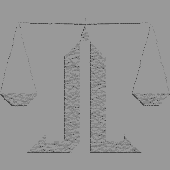

Michael J. Broyde
Forming Religious Communities and Respecting Dissenter's Rights: A Jewish Tradition Model for a Modern Society
Michael J. Broyde*
Table of Contents- Introduction
- Jewish Law on Excluding
- Shunning: For What Offenses
- Shunning and Excommunication in American Tort Law
- Exclusion and the Financial Ramifications: The British and Canadian Approaches
- What is the Value of Excluding
- Conclusion
This paper was written for distribution at the Conference on Religious Human Rights in the World Today: Legal and Religious Perspectives at Emory University on October 6-9, 1994 and is not for distribution in any other forum. Please direct comments or questions to Prof. Michael Broyde, School of Law (or Department of Religion), Emory University, Atlanta GA 30322. Voice: 404 727-7546; Fax: 404 727-6820; Email: relmb@unix.cc.emory.edu.
I. Introduction
Law is one of the ways that groups of people cohere and form a society1. Religion is another2. This paper will initially focus on the legal process Jewish law3 uses to form communities and to exclude people from its community4. It will address the legal basis within Jewish law for the power to shun or excommunicate5 people and the goals of such a practice6. It will then discuss the problems raised (internal to Jewish law) through the use of excommunication and shunning in a modern secular community where one's primary means of self-classification is not normally through religion.
This paper will then address modern American tort law responses to various religions excluding people from their sub-communities, as well as British and Canadian responses to similar situations. The paper will propose a change in American tort law doctrine in order to facilitate both the formation of religious communities and the protection of the rights of those who wish to leave such communities. Current tort law doctrine does neither well. A modification in Canadian constitutional procedure is also recommended to prevent unneeded interference in religious communities. The conclusion to this article notes that exclusions from religious sub-communities are not only fundamental to the ways in which a religious community forms itself, but profoundly compatible with general moral and legal notions of minority rights, and represents the most equitable way a religious community can form itself in a modern society.
1 | 2 | 3 | 4 | 5 | 6 | 7 | Notes

DISCLAIMER
|
|
Page 1 of 7 |
|